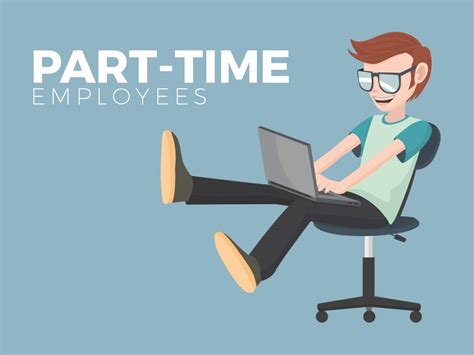Part-Time Employee: Definition And Work Arrangement

As the job market evolves, more and more people are seeking flexible work arrangements that allow them to balance work and life commitments. One popular option is part-time work. In this article, we’ll explore the definition of a part-time employee, the benefits and drawbacks of this work arrangement, and tips for managing part-time employees.
What is a Part-Time Employee?
A part-time employee is an employee who works less than the standard full-time hours set by their employer. There is no legal definition of what constitutes part-time work, but it is generally considered to be less than 35 hours per week. Part-time employees are entitled to the same employment rights as full-time employees, such as sick pay and holiday pay, but their entitlements are calculated on a pro-rata basis.
Benefits of Hiring Part-Time Employees
Cost-Effective
Part-time employees are a cost-effective option for businesses as they work fewer hours and are entitled to fewer employment benefits. This means that businesses can save money on salaries, benefits, and taxes.
Flexible Workforce
Part-time employees offer businesses flexibility in their workforce. They can be used to cover busy periods or seasonal work, or to provide cover for full-time employees who are on leave.
Diverse Skill Set
Part-time employees often have a diverse skill set as they may have worked in multiple industries or roles. This can be a valuable asset to businesses as they can bring fresh perspectives and ideas.
Drawbacks of Hiring Part-Time Employees
Lack of Consistency
Part-time employees may not be available to work the same hours each week, which can make scheduling difficult. This lack of consistency can also impact productivity and team cohesion.
Training and Supervision
Part-time employees may require extra training and supervision as they are not as familiar with the business or team as full-time employees.
Limited Availability
Part-time employees may not be available to work overtime or cover unexpected absences, which can put pressure on the rest of the team.
Managing Part-Time Employees
Effective Communication
Effective communication is key to managing part-time employees. Make sure they are aware of their responsibilities, any changes to their schedule, and any upcoming deadlines.
Flexibility
Be flexible with part-time employees and try to accommodate their personal commitments where possible. This can help to build trust and loyalty.
Equal Treatment
Ensure that part-time employees are treated equally to full-time employees. This includes providing them with the same opportunities for training and development, and involving them in team-building activities.
Clear Expectations
Set clear expectations for part-time employees in terms of their performance and responsibilities. This can help to avoid misunderstandings and ensure that everyone is working towards the same goals.
Regular Feedback
Provide regular feedback to part-time employees on their performance and progress. This can help to identify areas for improvement and ensure that they feel valued and supported.
Conclusion
Part-time employees can be a valuable asset to businesses, offering flexibility and a diverse skill set. However, managing part-time employees requires effective communication, flexibility, equal treatment, clear expectations, and regular feedback.
FAQs
What is the difference between a part-time employee and a full-time employee?
A part-time employee works fewer hours than a full-time employee and is entitled to fewer employment benefits. Part-time employees are entitled to the same employment rights as full-time employees, but their entitlements are calculated on a pro-rata basis.
How many hours per week is considered part-time work?
There is no legal definition of what constitutes part-time work, but it is generally considered to be less than 35 hours per week.
What are the benefits of hiring part-time employees?
Part-time employees are a cost-effective option for businesses, offer flexibility in their workforce, and often have a diverse skill set.
What are the drawbacks of hiring part-time employees?
Part-time employees may not be available to work the same hours each week, may require extra training and supervision, and may not be available to work overtime or cover unexpected absences.
How can I effectively manage part-time employees?
Effective communication, flexibility, equal treatment, clear expectations, and regular feedback are key to managing part-time employees.

